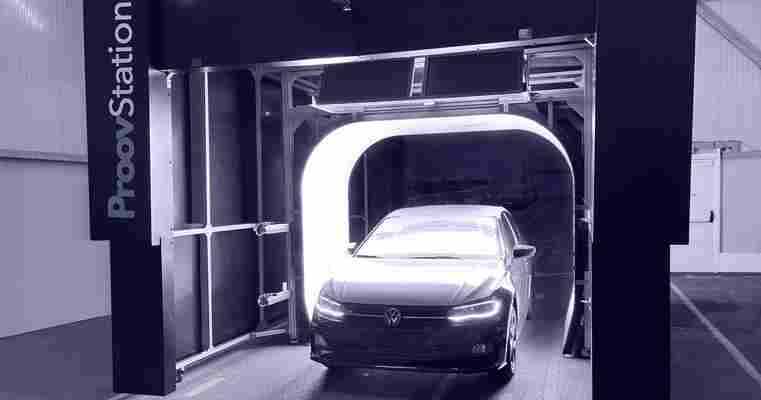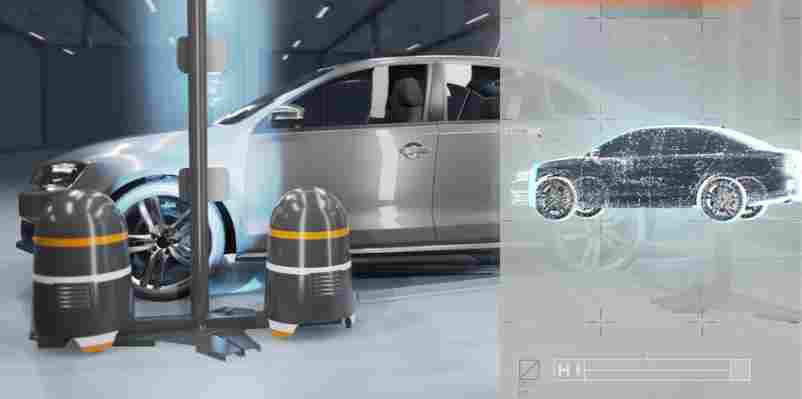Vehicle Safety Inspection
Vehicle Safety Inspection
Main_Content
Most used vehicles are required by Maryland Law to undergo a safety inspection prior to its sale or transfer. Generally, the seller or transferor of the vehicle is required to obtain the inspection certification. However, for class E trucks (exceeding ¾ ton manufacturer’s rated capacity), class F truck tractors, and class G freight trailers, semi-trailers and dump service semi-trailers, either the seller/transferor or the purchaser/transferee may obtain the inspection certification. Once your vehicle is inspected your inspection certification will be electronically sent to the MVA.
How do I obtain a Maryland Safety Inspection Certification for my vehicle? To obtain an inspection certification, you must have your vehicle inspected at a licensed vehicle safety inspection station in Maryland. There are approximately 1,600 of these facilities throughout the state. Stations are authorized to inspect certain types of vehicles, some inspect multiple types, see below for the station class you need. Most vehicles on the road are class A vehicles.
Vehicle Classes
Class A - Passenger vehicles, autocycles, limousines, multipurpose passenger vehicles, recreational motor homes and trucks 10,000 pounds and under GVWR, and trailers not equipped with air brakes.
- Passenger vehicles, autocycles, limousines, multipurpose passenger vehicles, recreational motor homes and trucks 10,000 pounds and under GVWR, and trailers not equipped with air brakes. Class B - Any trailer, including those equipped with air brakes.
- Any trailer, including those equipped with air brakes. Class C - Trucks, truck tractors, buses, recreational motor homes, converted buses, and limousines over 10,000 pounds GVWR.
- Trucks, truck tractors, buses, recreational motor homes, converted buses, and limousines over 10,000 pounds GVWR. Class M - Motorcycles, 3-wheeled motorcycles, and trailers that are not equipped with air brakes.
- Motorcycles, 3-wheeled motorcycles, and trailers that are not equipped with air brakes. Class T - Any trailer not equipped with air brakes.
- Any trailer not equipped with air brakes. Class R - Recreational motor homes and converted buses.
Always inquire whether the station has the proper authorization to inspect your vehicle. To find a licensed vehicle safety inspection station near you use this link Inspection station lookup to find an inspection station.
It is best if you schedule the safety inspection first before you take the vehicle to be inspected, ensure that it is properly registered, either in Maryland or in another state. If you are not able to register the vehicle because it has not yet received a safety certification, you may qualify for a 30-day temporary registration that will enable you to legally drive the vehicle to the inspection station. It is the vehicle owner’s responsibility to legally transport the vehicle to the inspection station.
The Inspector will enter the inspection information into the Maryland Safety Inspection System, which will electronically transfer the information to the MVA if the vehicle meets or exceeds all Maryland safety standards. To improve customer service, the Automotive Safety Enforcement Division has implemented an electronic vehicle inspection receipt which is emailed to the customer. The customer should provide an email address to the inspection station so this receipt can be electronically sent to them.
If the customer has a temporary vehicle registration, the business day following a passed inspection, the customer can go online: myMVA eServices to have the registration card and stickers, valid for two years, mailed to them, eliminating a trip to the MVA.
What happens if my vehicle fails the safety inspection?
If your vehicle fails to meet any safety standard, the Maryland Inspection Certification cannot be issued. You must have the problem(s) identified on the station’s inspection report fixed and then have the vehicle re-inspected by the same registered inspection mechanic at the same station. You have the option of fixing the problem yourself, having the inspection station fix the problem, or taking the vehicle to another facility for repairs.
N ote that the inspection station can charge you for each re-inspection, unless the repair can be visually verified. If you do not have the vehicle re-inspected within 30 days or you exceed 1,000 miles, you will be required to pay for a new, complete inspection. If the vehicle is re-inspected within 30 days after the original inspection date and you have driven it less than 1,000 miles, the inspection station will only need to inspect the defective equipment identified during the initial inspection. However, if a new defect is visually observed during the re-inspection, the newly discovered defect must also be repaired and re-inspected. See Maryland's regulations ( COMAR 11.14.01.10 (A(3) ) for details.
Fees:
The fee for a vehicle safety inspection varies with the inspection station’s labor rate. Maryland regulations regulate the number of labor hours billed by the station for an inspection, but they do not regulate the station’s labor rate. The fee charged for a safety inspection must be prominently displayed in each station.
varies with the inspection station’s labor rate. Maryland regulations regulate the number of labor hours billed by the station for an inspection, but they do not regulate the station’s labor rate. The fee charged for a safety inspection must be prominently displayed in each station. The fee for the re-inspection of a vehicle varies with the inspection station’s labor rate and the specific parts or systems that need to be re-inspected. A re-inspection fee is not to be charged if the repair can be visually confirmed, such as an inoperable light. If the re-inspection requires jacking, lifting, measuring, or testing the vehicle, a prorated fee may be charged. Check the station’s posted fee information for details.
Contact Information:
Maryland State Police
Automotive Safety Enforcement Division (ASED)
6601 Ritchie Highway, NE
Glen Burnie, MD 21062
Email: msp.ased@maryland.gov
For Telephone Questions:
MVA Customer Service Center: 1-800-950-1MVA (1682) or 410-768-7000
Out-of-State: 1-301-729-4550
TTY/Hearing Impaired: 1-301-729-4563
APPENDIX A
Vehicle Parts or Systems to be Inspected
AI Powered Car Inspection
Remarketing

Until now, evaluating car’s damages has been a job mainly for humans. However, manual vehicle inspections are slow, expensive, inconsistent and remain subjective. In a business where time counts and a few minutes can make a difference in cost for large volumes of cars, AI-powered inspection is about to change the rules of the game.
ProovStation technology allows you to further increase the accuracy of the damage recognition, at unprecedented levels of speed and unit cost to benefit your customers.
UVeye's System Can Completely Inspect a Vehicle in Four Seconds or Less
A Tel Aviv, Israel, startup created bomb-detection technology based on artificial intelligence but quickly realized the system's value to inspect cars for defects and problems.

The UVeye system can fully inspect a moving car in four seconds and can spot defects less than a tenth of an inch in size.
Companies including Daimler, Škoda, Toyota, and Volvo are working with UVeye to take advantage of its full-vehicle, underbody, and tire inspection systems, the company says.
Intelligent machines may not be driving us to the movies yet. But a small Israeli company called UVeye has created a smart-machine inspection service that should help end those nasty damage arguments at the rental-car return counter.
"It started out as a smuggling and bomb-detection inspection system," explains CEO Amir Hever. Then it leapt over to the auto industry. Hever tells us that his artificial-intelligence-based system can fully inspect a moving car in three to four seconds for any kind of fluid leak and for dents or defects as small as 0.08 inch. That's very significantly faster than a human can inspect a vehicle. So carmakers, fleet operators, suppliers, auto dealers, insurance companies, and rental and lease companies should be very interested in the two-year-old company's technology.
UVeye
UVeye
Hever says he is currently working with Daimler, Toyota, Volvo, the VW Group's Škoda, and another, undisclosed automaker to develop systems for assembly lines, shipping areas, and dealerships. The company claims it has raised $35 million in investment capital since 2017 and will be making the rounds of tech events such as World Summit AI in Amsterdam in early October and CES in Las Vegas next January.
The relatively small company, with about 100 employees, offers three systems that can be used separately or together: Artemis (tires), Atlas (360-degree body), and Helios (underbody). They were originally developed as a comprehensive security system. Interestingly, the system's high-res ability was initially considered a problem. UVeye discovered so many false positives because of the accuracy of the technology's cameras, sensors, and intelligence systems that it became clear they could be used as a high-speed quality-control inspection system on a vehicle's tires, upper body, and underbody. For example, the camera inspects the sidewall's shape for tire pressure and can detect dried-out tire rubber or excessive tread wear. With custom software overlays, the system can also do predictive maintenance to stay ahead of issues or discover early part failures.
Beyond the 20 cameras, which fire at up to 200 frames per second, other sensors can check fluid levels and even the (correct, healthy) sound signature of the vehicle. Hever would not disclose what the other sensors were or how they work. But obviously, the system is auditory as well as visual and is just at the beginning of its development, despite existing agreements with some carmakers. UVeye has already built up a significant database with individual tweaks for makers that wanted to include specific areas of inspection and specification windows for, say, body cutline gaps and ride height.
The new system also leans on super-powerful lighting, cloud architecture, deep learning, sensor fusion, high-speed data processing, and some proprietary technology to closely eyeball a vehicle. The company’s drive-through (up to 30 mph) systems can detect external and mechanical flaws and identify anomalies, modifications, or foreign objects.
As this young company expands from its current locations in Israel and Connecticut to Europe and the Asia Pacific region, its rollout of better ways to inspect vehicles will be worth watching.
This content is imported from YouTube. You may be able to find the same content in another format, or you may be able to find more information, at their web site.
This content is created and maintained by a third party, and imported onto this page to help users provide their email addresses. You may be able to find more information about this and similar content at piano.io
